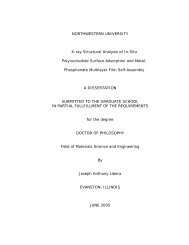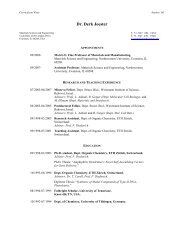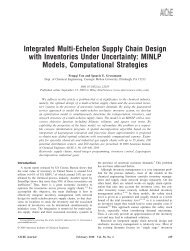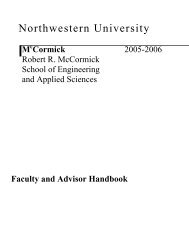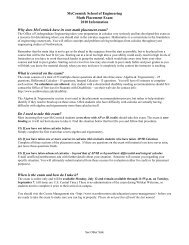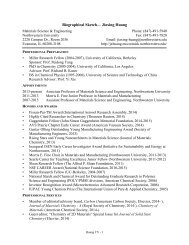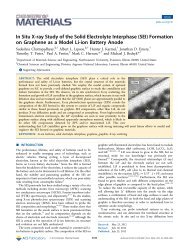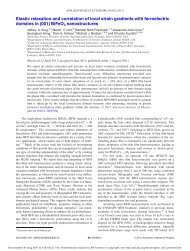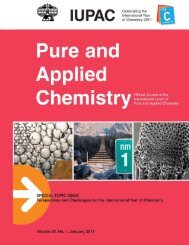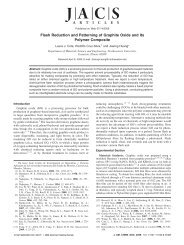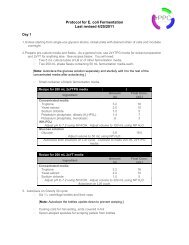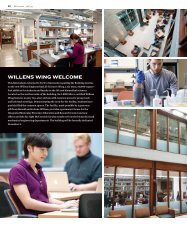Community-Based Operations Research - Humanitarian Logistics
Community-Based Operations Research - Humanitarian Logistics
Community-Based Operations Research - Humanitarian Logistics
You also want an ePaper? Increase the reach of your titles
YUMPU automatically turns print PDFs into web optimized ePapers that Google loves.
Johnson and Smilowitz: <strong>Community</strong>-<strong>Based</strong> <strong>Operations</strong> <strong>Research</strong>114 Tutorialsin <strong>Operations</strong><strong>Research</strong>, c○ 2007 INFORMS2.5. Nonprofit ManagementBaker Werth [6] describes the development of a decision-support division within a countyhuman-services agency to support strategic management and accountability services forlocal government. Vericourt and Lobo [92] model of a nonprofit’s decision to partake infor-profit activities. For-profit activities often generate future revenue for nonprofit workat the expense of current resources. They show that under certain conditions the optimalinvestment decision in for-profit activities is of threshold type.2.6. Lessons LearnedThe past 15 years has seen a significant growth in research that is consistent with ourdefinition of community-based OR. Increasingly, OR/MS researchers are aware of the needto incorporate socio-economic and political concerns directly into their planning models,rather than assert, as Gregg et al. [30] do in a stochastic programming model of facilitylocation applied to library closings, that “political factors can be incorporated by meansof user intervention” (p. 90). The models discussed in this section also reflect a desire toapply detailed understanding of stakeholder needs to quantitative models, which can yieldactionable, policy-relevant prescriptions. These efforts stand in contrast to some researchoutputs associated with UK-style community OR and early U.S. efforts in this domainthat focused more on community engagement and community efficacy. Finally, many of themodels discussed in this section cross disciplinary boundaries, for example adapting modelsfrom other domains for purposes of decision making, or using research evidence outside ofOR/MS to justify model-building efforts. However, more needs to be done to ensure thatnovel and innovative community-focused planning models are implemented in the field andtheir impacts on stakeholder groups evaluated rigorously. In this sense, the record of realworldimpacts represented by models of the type presented in Larson and Odoni’s Urban<strong>Operations</strong> <strong>Research</strong> [60] serve as a benchmark for community-based OR.3. Applications3.1. Food SecurityIn 2005, thirty-six million Americans suffered from hunger (U.S. Department of Agriculture[87]). Twenty-five million of these Americans rely on America’s Second Harvest (ASH)and their network of pantries, shelters, and soup kitchens for food (ASH [4]). The largestsuppliers to these agencies are regional and local food banks. Food banks are large-scaledistribution centers that collect, store, and distribute food. Much of this food is donatedby various sources of surplus food (e.g., supermarkets and grocery chains). According tothe U.S. Department of Agriculture [88], about 96 billion pounds of food are wasted eachyear in the United States. The goal of ASH and the agencies in their network is to matchsurplus food with those in need. This matching is a large-scale distribution and inventorymanagementproblem that occurs each day at thousands of nonprofit agencies across thecountry. Much research has been conducted on related supply-chain problems in commercialsettings where the goal of such systems is either to maximize profit or minimize cost. Littlework, however, has been conducted in nonprofit applications. In such settings, the objectivesare often more difficult to quantify because issues such as equity and sustainability must beconsidered, yet efficient operations are still crucial.The Greater Chicago Food Depository (GCFD) is an active ASH member. Accordingto a recent study by the GCFD and ASH [29], 500,000 people in the Chicago region areserved by the GCFD each year. One program run by the GCFD is the Food Rescue Program(FRP), which distributes perishable food from donors (e.g., supermarkets and restaurants)to agencies (e.g., shelters and soup kitchens). Over 80 donors and 100 agencies participatein the FRP, which moves over four million pounds of food annually.



